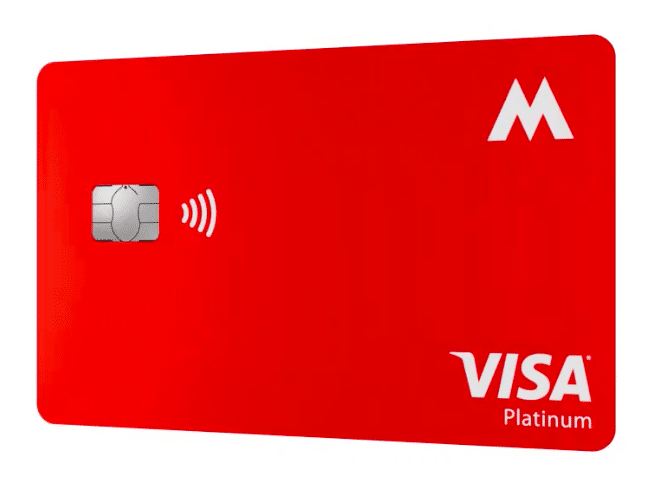Mogo CEO David Feller talks to Cantech Letter

 Since going public in June, Vancouver fintech innovator Mogo has been applying lessons learned from its long apprenticeship in the start-up world to taking on the big banks, bringing mobile banking, instant credit decision-making, and a generally more agile and intuitive approach to a sector ripe for shaking up.
Since going public in June, Vancouver fintech innovator Mogo has been applying lessons learned from its long apprenticeship in the start-up world to taking on the big banks, bringing mobile banking, instant credit decision-making, and a generally more agile and intuitive approach to a sector ripe for shaking up.
Consultancy McKinsey predicts in its 2015 Global Banking Annual Review, titled The Fight for the Customer, that by 2025, banks could lose 60% of their profits in consumer finance, 34% in payments and small business lending, 30% in wealth management and 20% in mortgages to alternative lenders.
As Mogo prepares to offer a new range of products, including mortgages, designed to bring that fight on to the turf traditionally controlled by banking institutions, the fintech battle for the customer seems poised to heat up yet further in 2016.
In choosing incumbent industries to disrupt, however, one wonders whether the banking sector is the wisest Goliath for this David to approach. The banks are the only sector of the Canadian economy that appear immune to the outside pressures that have brought the resource sector low, and with their massive multi-billion dollar profits, the banks have been quick to both notice and counter the threat proposed by the start-up fintech world.
Cantech Letter caught up with Mogo CEO David Feller.
David, fintech is a very broad term – where does Mogo fit?
Mogo is essentially building a next-gen digital bank. The financial services industry is undergoing a seismic shift as consumers look to move to a completely digital experience. What consumers do today in a branch, on the phone or even on their laptop – that will all be done mainly through a mobile app and a completely digital experience where consumers can get what they want, when they want with less friction, more simplicity and without having to talk to anyone. We believe we are at the forefront of this in Canada and have invested over $100 million to date in building out our digital platform and the leading digital financial brand in Canada. We’re working on launching new products, including mortgages, and will continue to broaden the product offering, but all built for a digital experience vs. the traditional banking experience of today.
Like many companies, Mogo has been compared to Uber. Unlike many companies, there seems to be a certain truth to the comparison. Can you run down the similarities for us?
Uber is a great example of how a technology company completely disrupted an industry by bringing a vastly improved customer experience and superior value proposition. That’s what we’re focused on doing with banking, starting with consumer lending. With Mogo, consumers can go online and in less than three minutes can open an account, get decisioned on credit, get a free prepaid Visa card, which is a great no-fee alternative to a bank debit card, and find out what their credit score is. Again the account is free, there’s no impact to a consumer’s credit score and it only takes 3 minutes. Compare that to a bank where it can take hours to open an account and weeks to get decisioned on credit. We use technology, big data and design to make this happen and we have over 100 people focused on continuing to enhance this experience by continuing to remove friction. That’s what we mean by “uberizing” the banking experience and that’s what we’re 100% focused on doing.
I think the Uber example also shows how rapidly an innovator can gain users and market share. At the end of the third quarter, we had more than 158,000 MogoMembers, up 148% from Q3 2014, and this number continues to grow quickly. As a point of reference, Canada’s largest credit union has just over 500,000 members, so we think it won’t be long before we have more members than the largest credit union in Canada and on our path to having more members than some of the top 6 banks in Canada.
“The prevailing view is it will be very difficult for the banks to adapt – and adapt quickly enough – to combat fintech innovation.” – David Feller
Do you think Canada’s charter banks will end up co-opting a lot of the technologies that promise to disrupt them? How do you see the adoption of fintech playing out in Canada?
Yes, the U.S. market is a good reference point as the fintech sector there is more mature than in Canada. In the U.S. we’ve seen traditional financial institutions partner with and/or acquire fintech companies. For example, Lending Club has partnered with Citi. We definitely see this happening in Canada, too, and we’ve seen considerable interest in Mogo and what we’re building.
While it’s early days, it’s clear that disruption is happening to Canadian banks; every CEO is mentioning it and you have highly credible sources like McKinsey saying banks could lose up to 60% of their retail profits to new fintech players as consumers move to a digital experience. And the prevailing view is it will be very difficult for the banks to adapt – and adapt quickly enough – to combat fintech innovation. Take a look at any industry that has faced major disruption and show me anywhere the existing big players became the dominating players in the new disruption?
So we think they are asking themselves ‘what’s the best path forward?’ and partnerships and M&A are very real possibilities. We’re often asked why the banks don’t just throw a bunch of money at the problem and develop a competing solution. Walmart vs. Amazon is a good example that it’s not just about money – it’s very difficult for incumbents to adapt their business models, their culture, and their legacy technology. If it was that easy, then you wouldn’t see so many industries being disrupted.
Your revenue is climbing but you still aren’t profitable. When do you expect to be?
We’ve been very focused on top-line growth and have delivered strong performance. In Q3 2015, our revenue was $11.6 million, up 70% from Q3 2014. This puts us on an annual revenue run-rate of approximately $46 million. We made it clear to the market during our IPO that we would be making investments in key areas of the business, including technology development and marketing. We are going after a massive market that is measured in the billions, so investing in building the platform will be the key driver of the growth and long term value. In our Q3 results we provided more detail for investors to understand the difference between the core profitability of our products today versus the investment in the platform. Specifically, our contribution margin, which measures the profit contribution of our core loan products today, net of provision for loan losses, funding interest expense and customer service and operations, was at a $16 million annual run rate in Q3.
With our Q3 results, we told the market that, while we will continue to invest in our technology platform, we expect to demonstrate operating leverage beginning in Q4 2015 and to achieve positive Adjusted EBITDA for 2016 as we move toward profitability. That’s a real focus of the management team and Board.
It’s been a generally tough market for small caps since your IPO. Can you comment on Mogo’s share price?
While we are pleased with the performance of the business, the stock price has been very disappointing – no question. We believe the performance reflects a number of factors, including difficult capital market conditions for small-cap companies and the low level of awareness of Mogo and the sector in general. We’re still at the very early stages of the digital transformation in financial services. As this trend becomes more broadly understood, we believe investors will better appreciate the opportunity for a company like Mogo. Management and the Board of Directors own roughly 25% of the outstanding shares – and have been buying lately – so we are highly aligned. We’re focused on continuing to execute on our growth plan and building the fundamentals. In addition, we are increasing our efforts to raise awareness of Mogo. In our view, the market should reward us over time as we deliver in both of these areas.
What kinds of catalysts do you expect might help Mogo in 2016?
New products and partnerships will be front and center in 2016. From our successful start in consumer lending, our plan is to build a broader suite of financial products that leverage our platform and growing member base. We’re placing a priority on increasing the mix of non-capital-intensive, fee-based revenue, through the introduction of new products including the new Mogo Prepaid Visa, the Mogo Mortgage and Mogo Marketplace Lending. We will also launch our mobile app in 2016, which we expect will further fuel our membership growth and obviously generate additional operational efficiencies.
Nick Waddell
Founder of Cantech Letter
Cantech Letter founder and editor Nick Waddell has lived in five Canadian provinces and is proud of his country's often overlooked contributions to the world of science and technology. Waddell takes a regular shift on the Canadian media circuit, making appearances on CTV, CBC and BNN, and contributing to publications such as Canadian Business and Business Insider.


